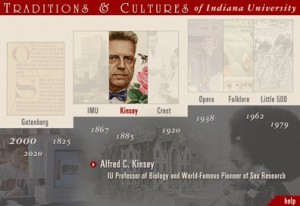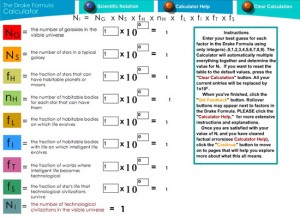I have been involved in instructional support services within higher education since 1996. It has been a privilege to be able to co-create and provide service to faculty to enhance their teaching. I do not believe that technology per se enhances teaching, but instead it can provide a medium to present the information in multiple ways for the various learner styles. Technology can also be a toolbox for faculty to manage the more onerous tasks of teaching i.e. course management such as keeping a grade book or posting a syllabus. This variation of faculty instructional and multimedia needs is exactly why I really enjoy instructional support.
In addition to producing instructional cd-roms, websites and other media, I have also taught workshops on image editing, course management tools, copyright issues, and Turnitin software.
The following is not a comprehensive list of instructional projects I have worked on, but it is a list of my projects that best represent how technology can enhance learning.
The Conversation

- Description: Professor Terry Diggs has taught Film and the Law at UC Hastings for over 25 years. In honor of the 40th Anniversary of Coppala’s The Conversation, with the assistance of Educational Technologies and Media Services, Diggs is organzing a symposium, The Conversation at 40: The Court, Coppola, and the Reasonable Expectation of Privacy. As the post-U.S. v. Jones Court again wrangles over the parameters of the Fourth Amendment, the anniversary of Coppola’s film allows attorneys to examine what the accepted constitutional standard of four decades – “the reasonable expectation of privacy” – really meant.
- Technology: WordPress, Timetoast
- Learning Objectives: To provide guests and MCLE attendees an interactive site to provide context in bringing together the kind of interdisciplinary cast required to investigate the birth – and arguable demise – of a constitutional concept: an idea defined as much by social commentary and cultural depiction as by legal text and scholarly discourse. Now, a post-U.S. v. Jones Supreme Court seems on the cusp of once again reinterpreting the Fourth Amendment.
California Civil Procedure Hybrid Course

- Description: Professor Rochelle Shapell has taught California Civil Procedure at UC Hastings since 1997. She is a co-author of the second (2005), third (2008), and fourth (2011) editions of Cases and Materials on California Civil Procedure. She is also the co-author of the first (2008) and second (2012) editions of California Civil Procedure for West’s Sum and Substance Quick Review outline series. Shapell worked with UC Hastings Educational Technologies Department and Media Services to assist in designing her traditional face to face course into a flipped, hybrid model. Shapell recorded lectures using Panopto personal capture and incorporated her video lectures into weekly modules. Each module provides instant feedback with quizzes and group participation in a series of online forums.
- Technology: HTML, Blackboard, Panopto
- Learning Objectives: Describe the sources of California civil procedural law and gain facility with utilizing those sources to resolve procedural issues
Analyze procedural statutes, rules, and cases
Compare and contrast California and federal procedure in key areas
Explain the important preliminary issues that an attorney must consider before filing a lawsuit (e.g., subject matter jurisdiction, personal jurisdiction, service of process, venue, conflict of laws)
Traditions and Cultures of Indiana University
https://www.indiana.edu/~tandc/

- Description: What are the goals and values of undergraduate education? In what ways does the university promote a broad spectrum of opinion, even with controversial topics? What kind of research is conducted here, and what is it used for? Why does a college in the Midwest have some of the best artistic and international programs in the country? These are just a few of the questions that are answered in COAS X112 Traditions and Cultures of IU—a Web-based, eight-week, two-credit class. Each chapter in the course is a linear series of screens offering visual images, video clips, music, and scanned historical documents. Students must complete short-answer responses, multiple-choice quizzes and tests, surveys that poll the class and post the results, and drag-and-drop exercises that allow students to classify information.
- Technology: HTML, Flash, Quicktime
- Learning Objectives: To help students develop the skills they’ll need to succeed in other IU courses: reading and summarizing; thinking critically about information; harnessing evidence to support an assertion; understanding the research methods and reasoning used in different disciplines.
Drake Formula
http://www.astro.indiana.edu/drake/intro.html

- Description: How many planets in the known universe could support life? Students in Indiana University’s Professor of Astronomy and department chair Richard Durisen’s Life in the Universe class use this interactive web module to let them make this and other predictions, then check the validity of their estimates. The module applies the Drake Equation—a series of calculations assembled by astronomer Frank Drake in 1961 to estimate how many intelligent civilizations might exist in the Milky Way galaxy—to the visible universe.
- Technology: Flash and Actionscript
- Learning Objectives: To provide immediate feedback and interactivity to provide students with reinforcement of the concepts. The course was traditionally taught using workbooks within a large lecture class that made timely grading and feedback difficult.
The following project was completed for my internship while I was pursuing my library science degree. The project was a cooperative venture between the Center for the Study of Global Change, the Indiana University Library, and the United Nations Library System, based in Geneva, Switzerland. I traveled to Switzerland to help supervise the digitizing of originals materials. I was also the project manager for the web site and the primary graphic designer for the library exhibit.
A Century of Nobel Peace Prize Laureates 1901-2005

http://www.indiana.edu/~global/resources/nobel.php
- Description: This website compliments an exhibition outlining the achievements of the laureates by including primary and secondary documents, bibliographies and related links for each laureate. The material begins with Frederic Passy, who won the Peace Prize in 1901, and ends with the International Atomic Energy Agency and Mohamed ElBaradei, who received Nobel Prize in 2005.
- Technology: HTML and PHP
- Learning Objectives: These materials have been used as an online textbook for various political science courses.